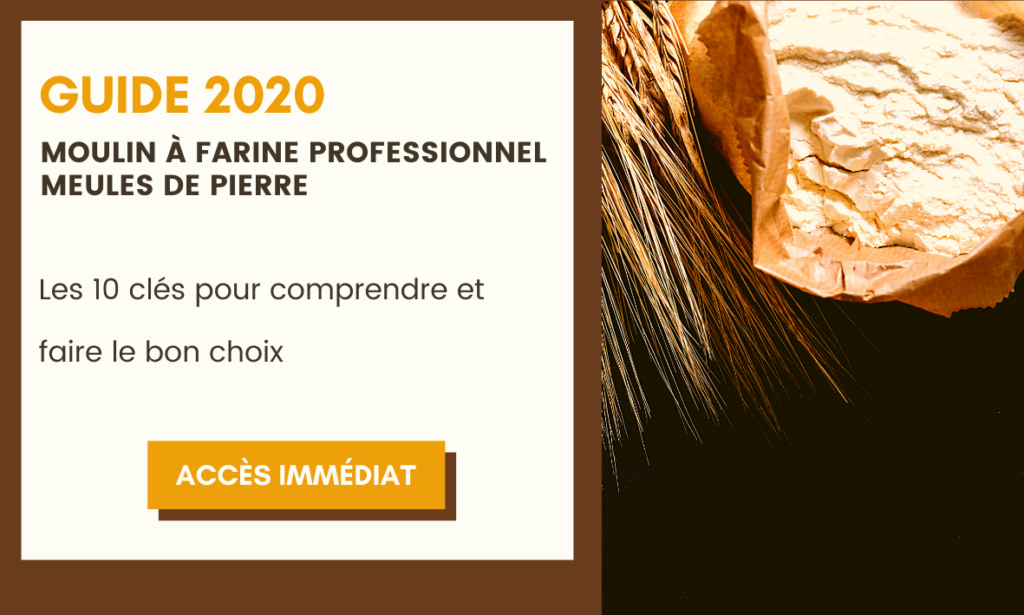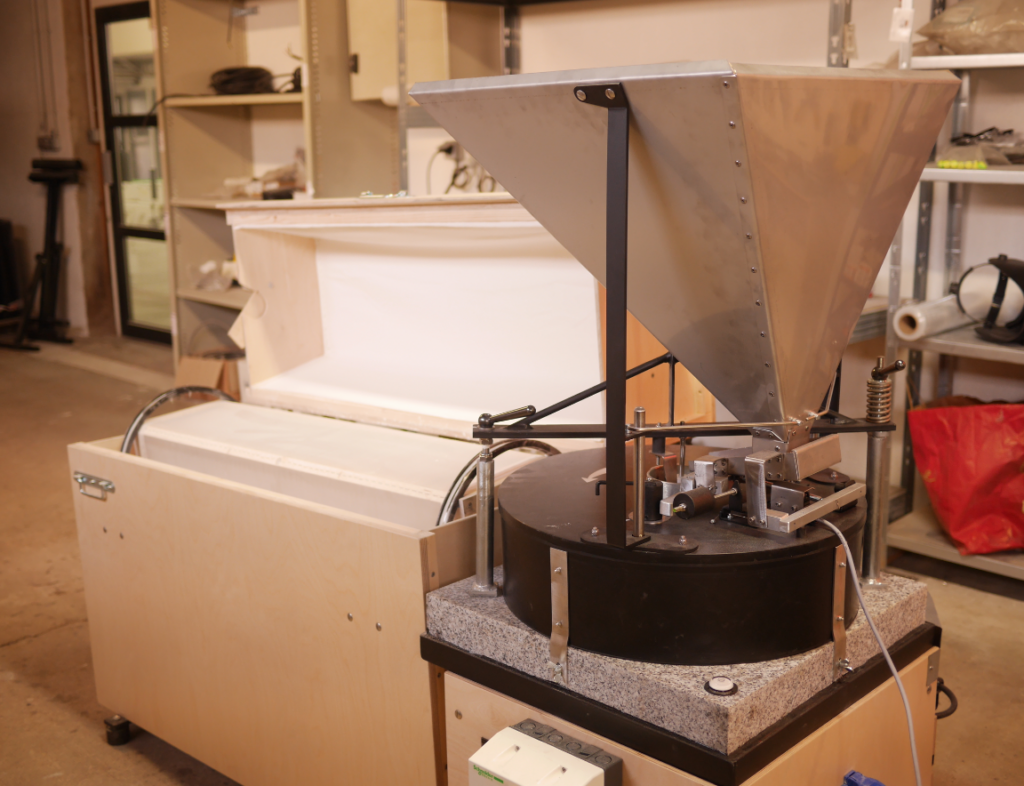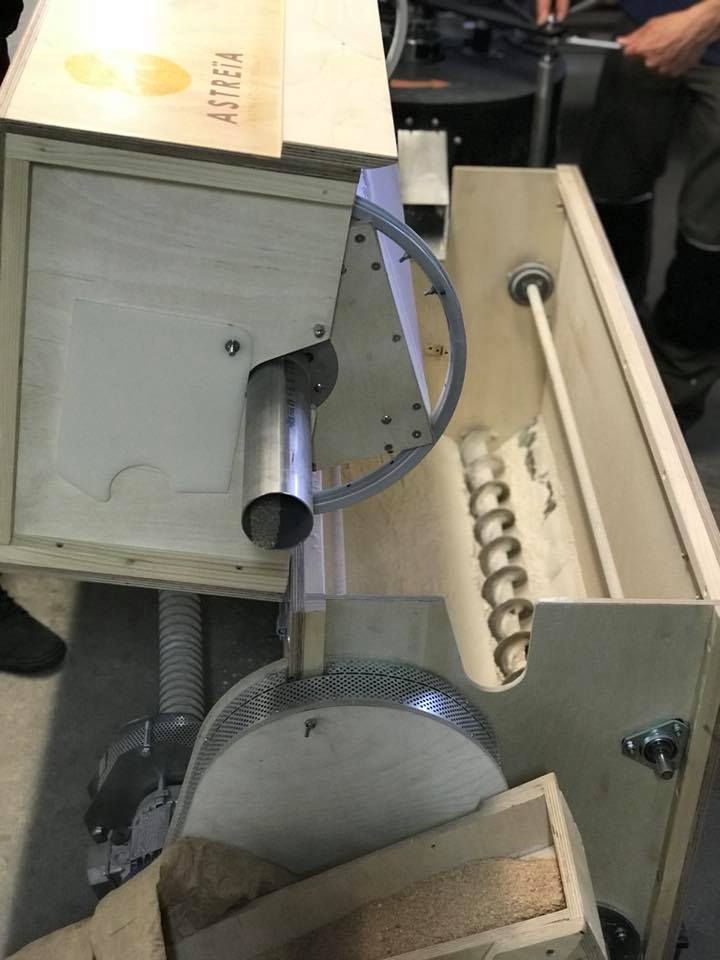The Astrié Mill invention: what did they really invent?
Few people know that the invention of the Moulin Astrié owes its name to the Astrié brothers. Unlike cylinder mills, the seed is not crushed but actually rolled between the millstones. Unlike more traditional stone mills, it’s not the weight of the upper millstone that crushes the grain, but a spring system and micrometric adjustment between the millstones that ensure the grain is unrolled.
This ‘unwinding’ ensures two essential stages:
- preserves all the qualities of the seed germ
- an extraction rate of over 80% in a single pass
At Astréia, we scrupulously respect the invention, we haven’t changed a thing. We cut our own millstones according to the Astrié brothers’ method, we monitor the process and we use Granit from Sidobre (Tarn) as André and Pierre Astrié did.
What difference does a ‘single pass’ extraction rate make?
That’s because such a high rate means that the seed is not heated or oxidised by passing several times between millstones or through cylinders. So it retains all its nutritional qualities and its germ is intact in the flour.
The result is a very high quality, local flour that you can now make the most of. For the baker, this flour is different because it makes bread that’s finally easy to digest!
What do you need to buy to start grinding with an Astrié Mill?
At Astréïa we sell a complete mill, including :
- the mill (the hopper and the millstones)
- the sieve (the box that collects the flour)
- a 370 micron (T110 flour equivalent) sieve (housed inside the sieve box)
- a shovel for manually extracting the flour from the sifting chamber.
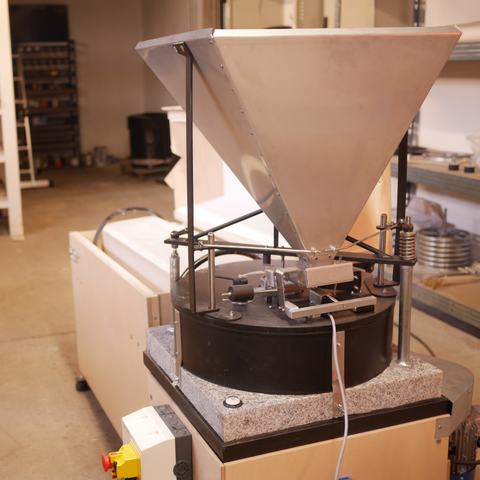
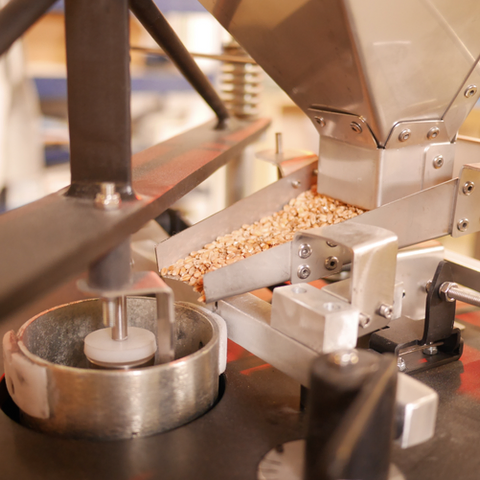
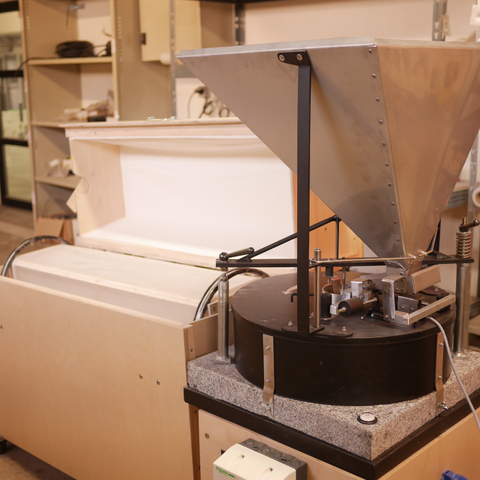
What is the diameter of the grinding wheels?
We are selling an Astrié flour mill with 50cm millstones and another mill with 100cm millstones.
How many kilos of flour can I get?
For the 50cm mill:
Between 12 and 15 kilos of flour per hour. But with extraction and bagging (optional) and a continuous supply of wheat, we can make up to 6 tonnes of flour a month. That’s more than the quota (35 tonnes of soft wheat/year).
For the 100cm mill:
Yields were doubled. That’s around 12 tonnes of flour per month.
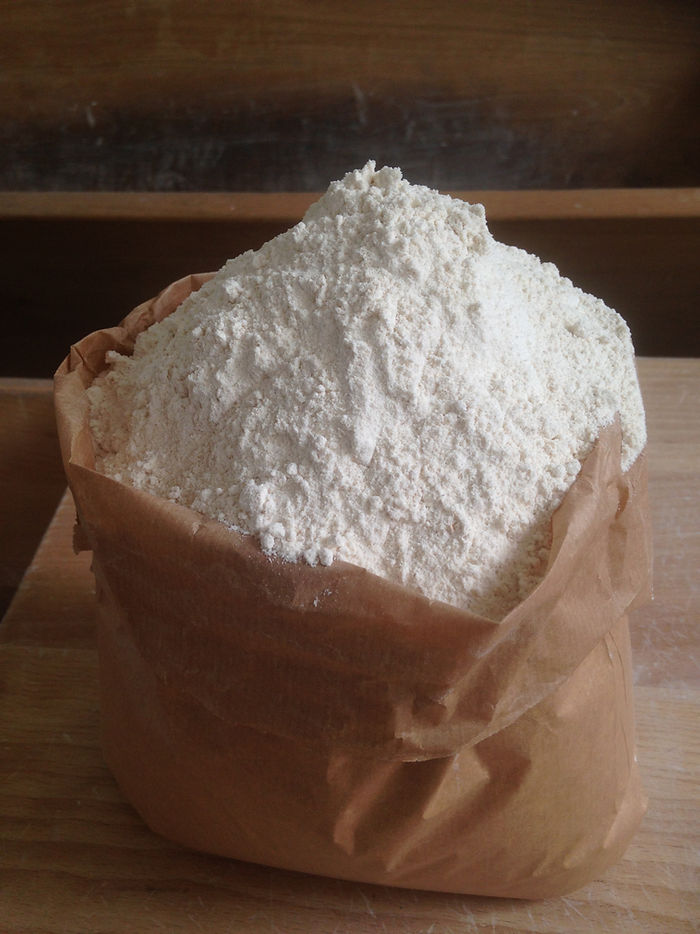
What is the ‘extraction and bagging’ option?
We’ve had a lot of questions about this option, and we’ll be writing an article about it soon.
Automatic extraction is an option: an endless screw housed at the bottom of the sifting chamber automatically extracts the flour from the sifting chamber.
This means you don’t have to remove the flour by hand. It comes straight out of the sifting machine. This option can be chosen on its own, without bagging (the automatic bagging of your flour).
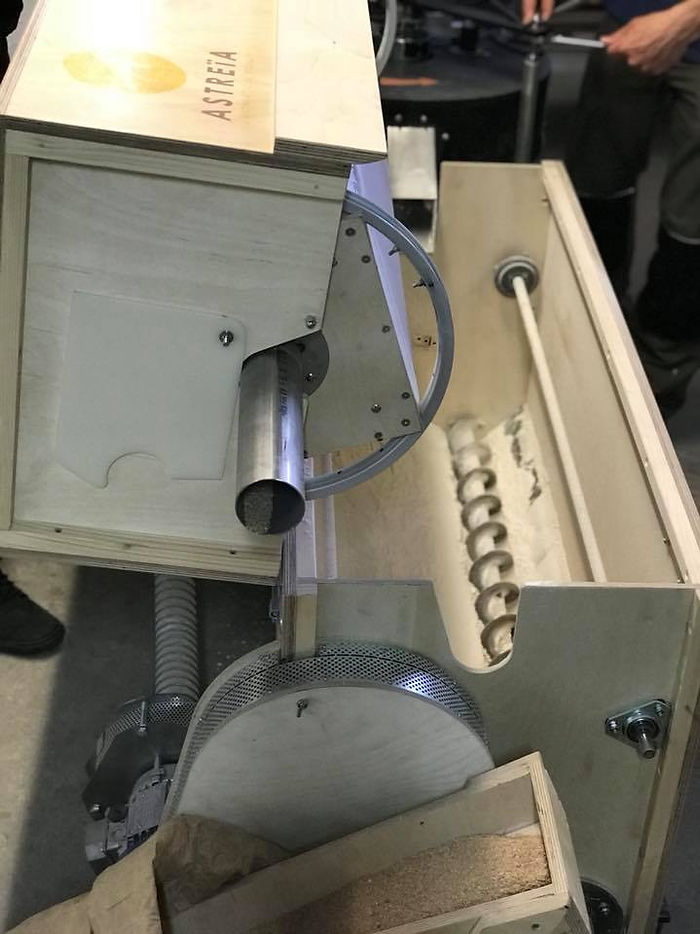
The bagging ramp is used to bag your flour as it comes out of the sifting machine. This is why the bagging ramp is sold with automatic extraction: the flour is automatically extracted from the sifting machine (extraction) and then fed into the bagging ramp, where the bags are filled automatically.
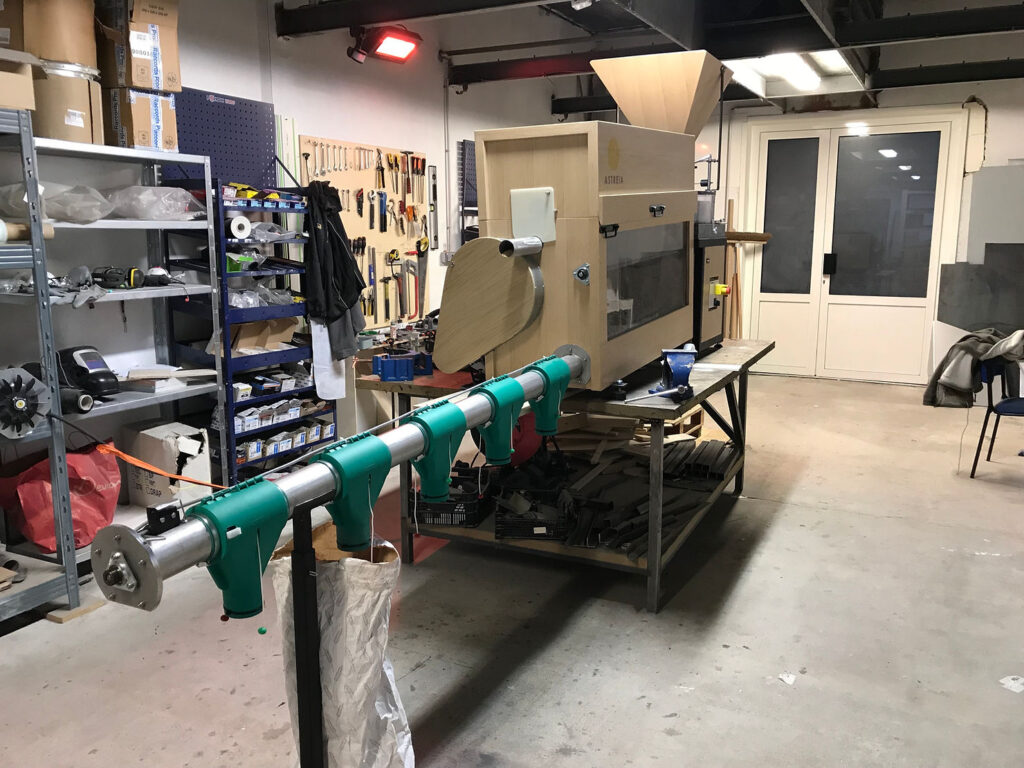
This ‘extraction + bagging’ option allows you to leave your mill working while you are busy with other tasks on the farm, in your bakery, etc. It also allows you to run the mill day and night. If you wish, we can advise you on the continuous feeding of the mill according to your current or future installation. We will be happy to discuss your project with you. As well as manufacturing the mill, we are here to help you find the advice and installations that will enable you to achieve your objective.
How do I make gluten-free flour with the Astrié mill?
Read the full article ‘How to obtain gluten-free flour in my stone mill like Moulin Astrié’, follow the guide!
Gluten-free regulations are strict, and the health of your consumers is at stake.
If you’re thinking of going gluten-free, it’s perfectly possible to do so with just one complete Astréïa mill (mill + bluttery).
If you’re thinking of going gluten-free AND continuing to produce more traditional flour at the same time, we recommend two equipment alternatives to suit your time and budget. Bear in mind that on our Astréïa model, the mill can be disconnected from the sieving machine.
– two complete mills: one for ‘gluten-free’ production and the other for your more traditional flour production
– a complete mill + an additional sifting mill: this reduces start-up costs and allows you to use the same mill (which you clean, of course!) that you move to connect to a sifting mill for ‘gluten-free’ flour and a sifting mill for ‘classic’ flour.

Good to know: our customers who make ‘gluten-free’ flour in addition to their ‘classic’ flour generally have a sifting mill in a separate room, and they move the mill from one room to another after cleaning it thoroughly to ensure real safety for their customers.
